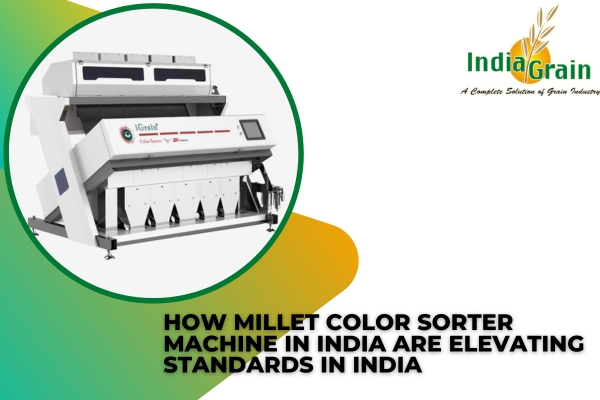
Blog-details
Posted By : Anil Yadav
Blog Date : 26th June, 2024
How millet color sorter machine in India are Elevating Standards in India
The Indian millet industry has undergone a remarkable transformation in recent years, thanks in large part to the growing adoption of advanced technology like millet color sorter machines. These innovative machines are playing a crucial role in elevating quality standards and enhancing the overall competitiveness of the millet sector in India.
Millet, a highly nutritious and climate-resilient cereal crop, has long been a staple in many parts of India. However, the traditional post-harvest processing methods often resulted in inconsistent quality and a lack of uniformity in the final product. This is where millet color sorter machines have emerged as game-changers.
These sophisticated machines use advanced optical sensors and algorithms to quickly and accurately sort millet grains based on their color, size, and other visual characteristics. By automating the sorting process, millet color sorter machines have significantly improved the efficiency and precision of millet processing, ensuring a more consistent and high-quality end product.
One of the primary benefits of millet color sorter machines is their ability to remove impurities and discolored grains from the millet lot. This not only enhances the overall appearance and visual appeal of the millet but also ensures that the final product meets the stringent quality standards demanded by both domestic and international markets.
Moreover, the use of millet color sorter machines has also helped to reduce manual labor and time-consuming sorting processes, which were previously a significant bottleneck in the millet supply chain. This, in turn, has led to increased productivity and cost savings for millet processors, ultimately benefiting the entire millet ecosystem.
The adoption of millet color sorter machines has also had a positive impact on the livelihoods of millet farmers in India. By ensuring a consistent and high-quality supply of millet, these machines have helped to improve the prices and demand for millet, providing a much-needed boost to the incomes of small and marginal millet growers.
Conclusion:
The integration of millet color sorter machines into the Indian millet industry has been a game-changer, elevating quality standards, enhancing competitiveness, and driving the growth and development of this vital sector. As the demand for millets continues to rise, both domestically and globally, the continued adoption of these advanced technologies will be crucial in positioning India as a leading producer and supplier of high-quality millet products.
Frequently Asked Questions
The primary function of a millet color sorter machine is to automatically sort and grade millet grains based on their color and other physical characteristics.
Millet color sorter machines improve product quality by eliminating human bias and inconsistencies in the sorting process, ensuring a more uniform and consistent end product.
Key advantages include enhanced efficiency, increased productivity, improved traceability, and access to new market opportunities.
These machines can detect and remove foreign materials, ensuring a higher level of purity and food safety for millet consumers.
